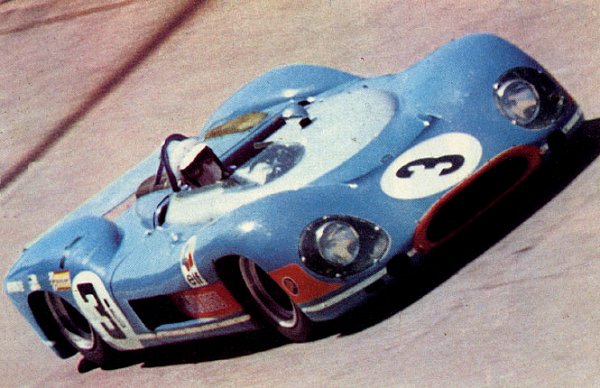Description
The Matra 650 was one of the most important endurance-racing prototypes in Matra’s rise toward becoming a dominant force at Le Mans. Introduced in 1969 as an evolution of the earlier M630, the 650 represented a significant advancement in aerodynamics, chassis integrity and mechanical refinement. It was developed to compete under the new 3-litre prototype regulations and served as a vital stepping stone between Matra’s early learning years and its later triumphs with the MS670 series.
The 650 used a lightweight aluminium monocoque chassis designed for rigidity, durability and service access during long-distance racing. Compared with its predecessor, the car featured a stiffer central tub, revised suspension mounting points and improved weight distribution. Over this structure Matra fitted a fibreglass body shaped for higher stability and more predictable aerodynamics. The design remained recognisably Matra, with a long nose, flowing wheelarches and a rear section optimised for high-speed performance. Two body styles were developed: a long-tail version for high-speed tracks such as Le Mans and a short-tail version for tighter circuits.
The car was powered by Matra’s developing 3.0-litre V12 engine, which was becoming the company’s technological centrepiece. With around 400 horsepower in early tune, the engine delivered its power at very high revs, producing a sharp, metallic shriek that became Matra’s trademark. It used four overhead camshafts, twelve individual intake trumpets and a racing ignition system that demanded careful setup. Although the engine remained complex and sometimes fragile in endurance conditions, its speed and character made it one of the most evocative engines in its class.
The V12 sat in a mid-engine position and was paired with a five-speed racing gearbox. Cooling was managed through large side radiators integrated into the car’s bodywork, and Matra continued to refine airflow across the rear deck to stabilise temperatures during long-distance running. Suspension remained double wishbones at the front and rear, with coil springs and dampers tuned for stability at high speed. The car rode on wide racing tyres that gave strong lateral grip, while ventilated disc brakes provided the stopping performance required for endurance circuits. The entire package weighed close to 700 kg, giving the 650 a strong power-to-weight ratio and excellent agility.
The 650 made its racing debut in 1969 and immediately demonstrated Matra’s rapid development progress. At the 1969 Le Mans 24 Hours, the long-tail 650 finished fourth overall, an important breakthrough for the marque after years of learning and early setbacks. The result proved that Matra had achieved the blend of speed and reliability required for endurance racing, even if the V12 still demanded further refinement. The season’s other performances reinforced this momentum, with the 650 showing competitive pace across international events.
In 1970 the short-tail 650 gained more attention, particularly at races such as the Tour de France Automobile, where its balance, acceleration and stability over mixed terrain made it especially effective. The car’s blend of climbing torque, high-revving top-end speed and compliant suspension suited the event’s unique structure, and the 650 secured a notable victory. This success underscored the car’s versatility and expanding competitiveness.
Drivers of the 650 often praised its stability, precise steering and forgiving chassis behaviour. While it retained the high-revving excitement of the V12, the car itself felt more predictable and easier to place on the limit than the earlier 630. Aerodynamic improvements gave it better manners at very high speeds, and the monocoque’s extra stiffness provided more consistent handling over long stints. Even so, the V12’s complexity meant reliability was always a challenge — a challenge Matra continued to address in its ongoing development programme.
By 1971 the 650 was overshadowed by the newer MS660 and the soon-to-arrive MS670, but it had already served its purpose. It proved Matra could build a fast, reliable, world-class endurance prototype and validated the company’s faith in its ambitious V12 engine. The lessons learned from the 650 fed directly into the designs that would dominate Le Mans from 1972 to 1974.
Today, the Matra 650 stands as one of the most charismatic and historically important cars in the company’s endurance-racing lineage. It represents the moment when Matra moved from promising outsider to genuine contender. With its shrill V12, lightweight monocoque, refined aerodynamics and strong race record, the 650 remains an enduring symbol of Matra’s determination to conquer endurance racing and an essential chapter in the brand’s path to Le Mans glory.
